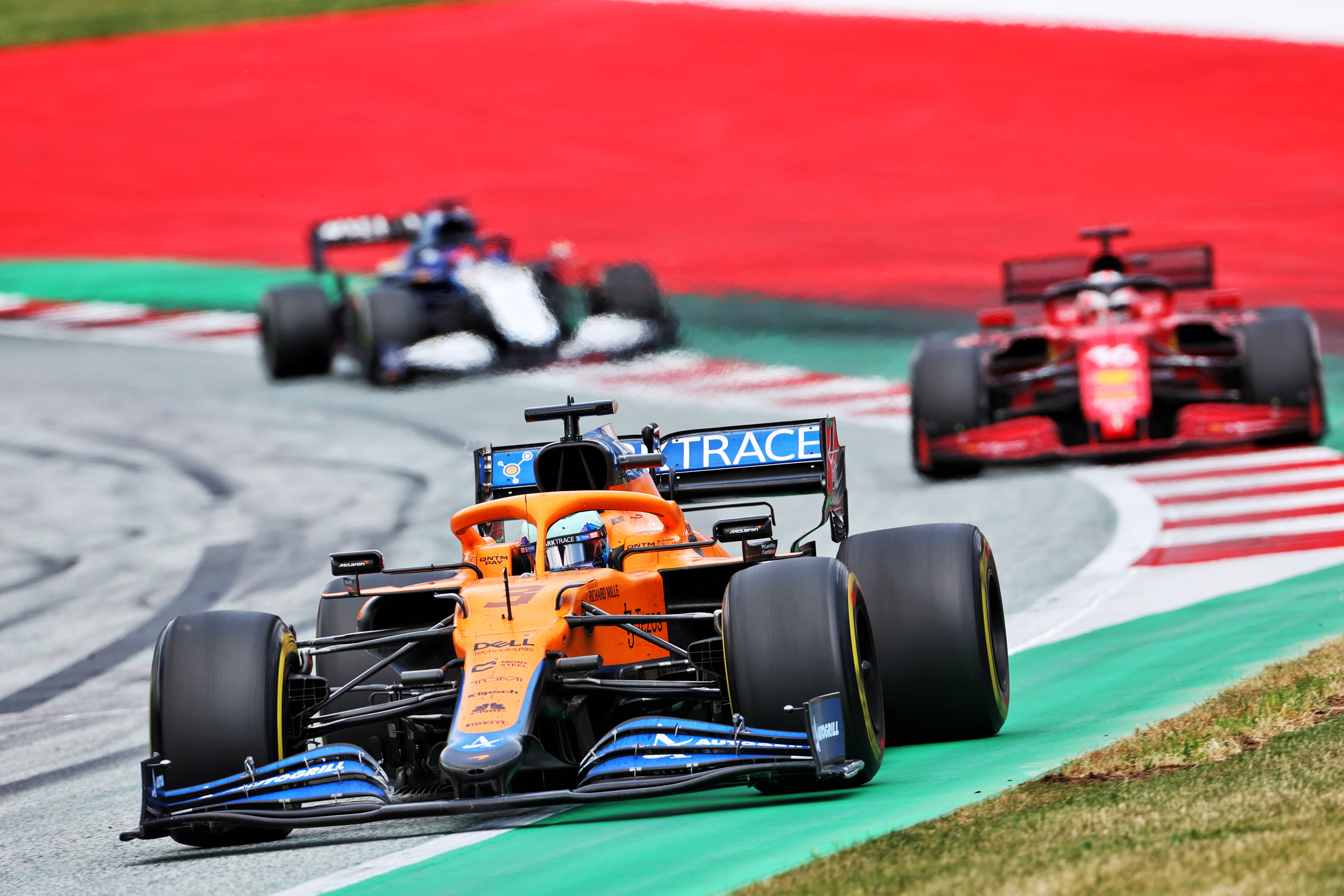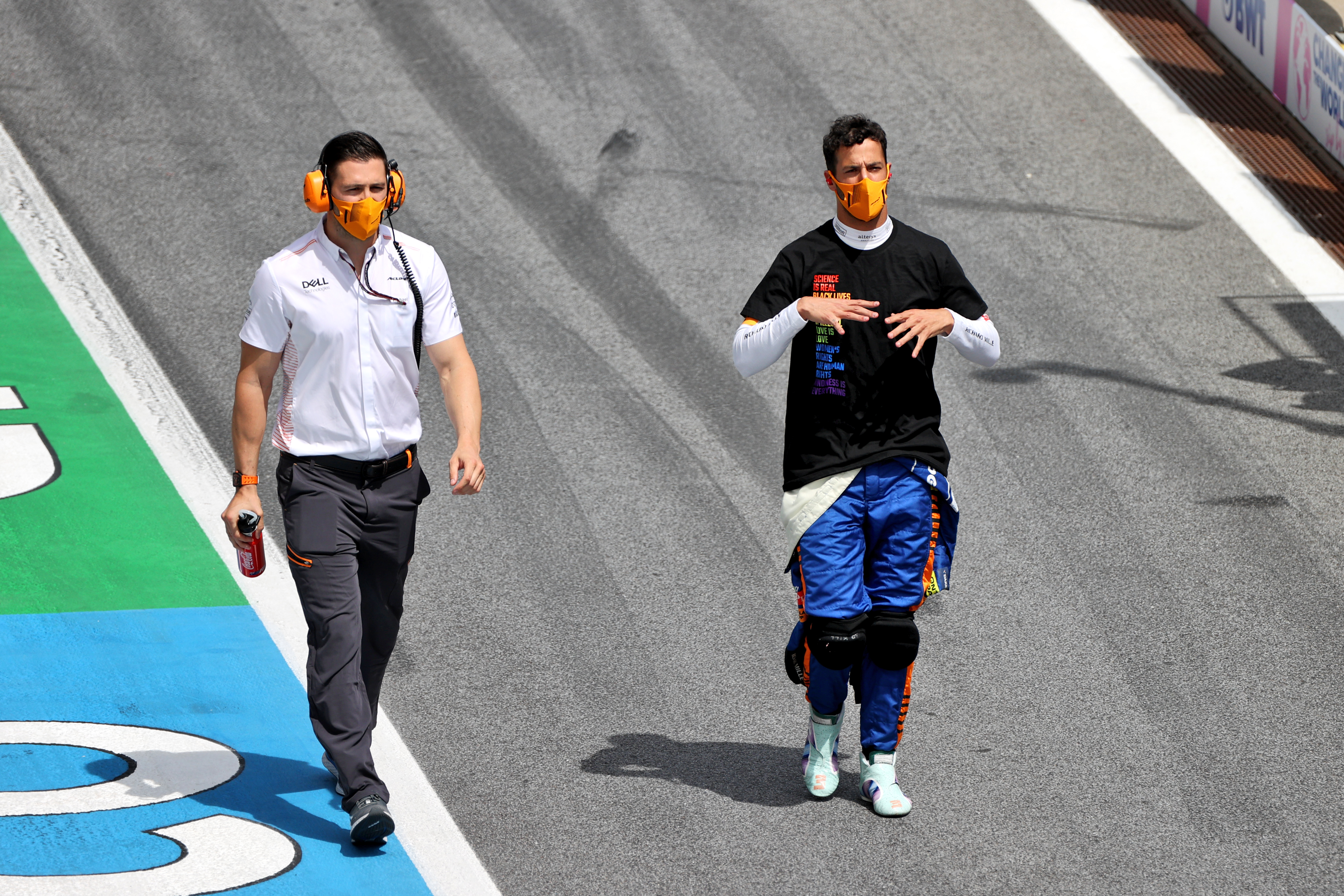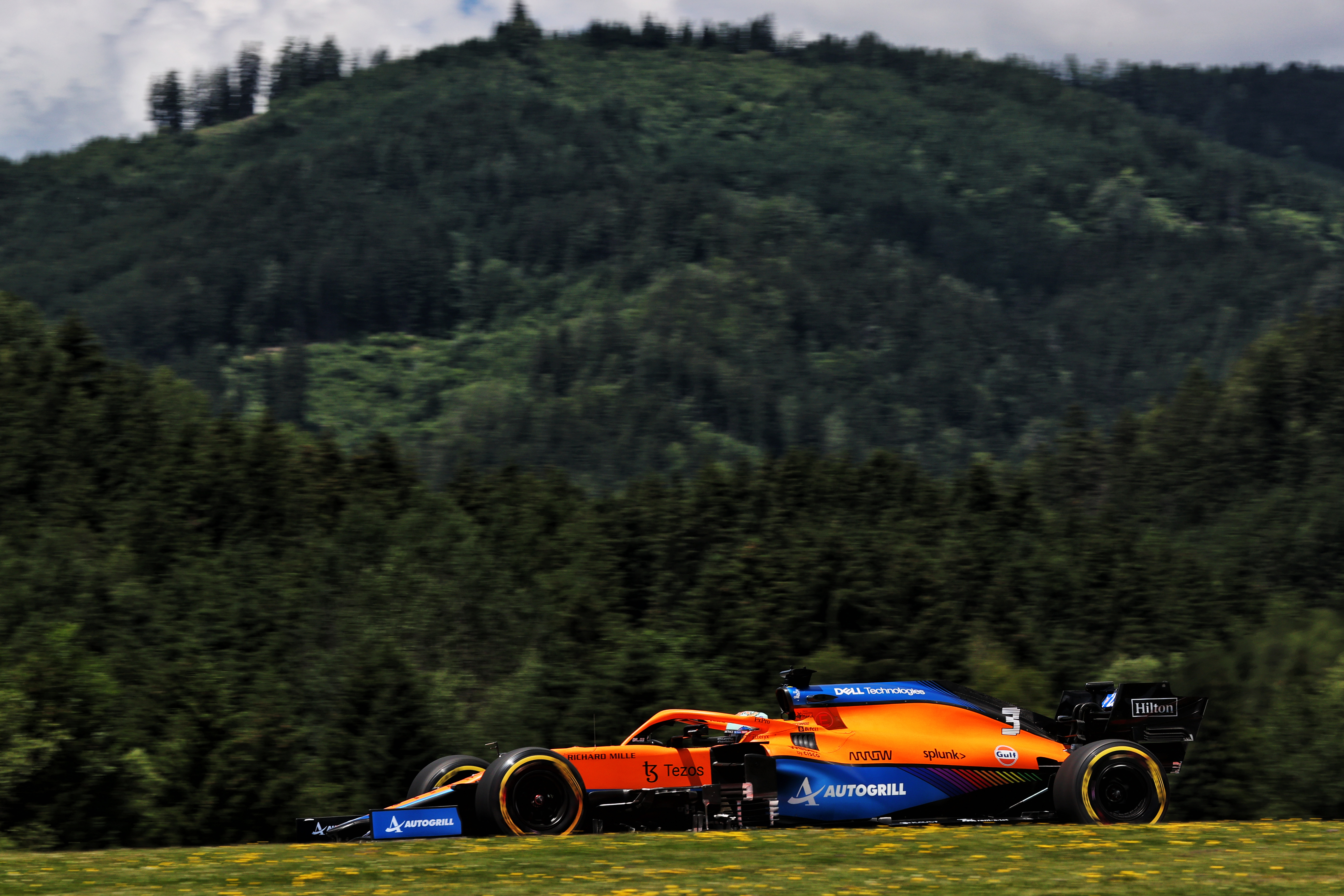Up Next

The basic stats of Daniel Ricciardo’s Styrian Grand Prix paint a grim picture: started 13th, finished 13th, crossed the line 45 seconds behind McLaren Formula 1 team-mate Lando Norris.
Without following Ricciardo closely it looked like a fittingly mediocre denouement to a tough weekend that went badly awry from the heights of finishing Friday practice second-fastest.
And beyond a brief and barely focused on loss of power that dropped him from ninth to 13th on lap seven, it would have been difficult for anyone watching the race to follow Ricciardo’s race at all.
Apart from that slide down the order, he was anonymous in the coverage. Even the engine issue earned little attention because in the bigger picture of the grand prix it only impacted the minor points positions.
That was totally out of kilter with the impact it had on his race. It wrecked it.

Ricciardo was aggressive after a very good launch but it didn’t pay off at the first corner, where he got himself sandwiched between George Russell and Yuki Tsunoda and had to back out.
Later round the lap though he passed Tsunoda on the outside into the penultimate corner and just kept within the track limits, which meant he was ninth thanks to the collision between Pierre Gasly and Charles Leclerc.
The plan was then to manage the tyres, keep them in decent shape to run as long as possible on the mediums, and then switch to the hards – in short, the strategy that Ferrari used to great effect to turn 11th into sixth with Carlos Sainz.
But when a “control issue” struck on lap seven, Ricciardo’s plan was torn to shreds. He dropped behind Tsunoda, Sainz, Sebastian Vettel and Kimi Raikkonen as he had to perform a reset on the steering wheel while running with less power.
“It was an awesome start, awesome first lap,” Ricciardo said. “We put ourselves in such a strong position ahead of a lot of quicker rivals, and on the mediums, so we were sitting pretty.
“Then all of a sudden, I lost power. So, every position that I gained, I basically waved them all through. We were able to fix it on track but then it’s too late and I’m back in the mess that I did well to get out of on the first lap.
“Then you’re in traffic, you’re in a train. Honestly, the race is over after that. It’s disheartening.”

That’s no exaggeration. Instead of moving forward and benefitting from his opening lap, Ricciardo probably spent 80% or more of his race bottled up behind other cars.
There are only a dozen relevant laps from Ricciardo’s grand prix after the opening lap. Six laps at the end of his first stint when he finally got some clear air as those in front of him pitted, and six laps after his pitstop before he caught the midfield train again.
It’s nearly impossible to judge a race like that so Ricciardo doesn’t deserve this grand prix to be added to the evidence of his struggles at McLaren.
In reality, this may well have turned out to be another slump-defying Sunday recovery. He’s put in a few of those already this season as his race-day deficit to Norris is nothing like what we see sometimes in qualifying.
The Sainz comparison is a valid and particularly hard one for Ricciardo. He was running ahead of the Ferrari when the engine issue struck and Sainz went on to finish sixth so it’s easy to see why Ricciardo sees that as a result that should have been his.
But Sainz’s rise was rooted in excellent pace in clear air in the second half of his first stint, which meant he rejoined from his pitstop at the front of the train Ricciardo was at the back of.
Ferrari had a faster car than McLaren on Sunday so it seems unlikely Ricciardo would have been able to do exactly what Sainz did. However, he would have got reasonably close.

It is reasonable to think Ricciardo should have finished anywhere between sixth and eighth in this grand prix – some way behind Norris still but hardly disastrous from his starting position.
Ricciardo’s 11 laps on either side of his pitstop offer evidence of why that result was possible.
Sainz was on an identical strategy but with more favourable circumstances than Ricciardo at the end of his first stint, because he was released into clear air by other cars pitting a full 10 laps before Ricciardo benefitted from the same.
That would have had a big impact on tyre life but more importantly, it meant the gap between them ballooned from a couple of seconds to over 12 seconds before Raikkonen stopped and Ricciardo was finally freed himself.
In the six laps Ricciardo completed before he and Sainz pitted together on lap 41, he only lost around 1.5s to the Ferrari. He was also quicker than Norris was at the end of their respective stints although Norris was on softs so it’s not surprising his pace dropped off more.
After the pitstop, Ricciardo had six more laps before he caught Esteban Ocon’s Alpine. In that time he was a few tenths quicker than Norris and lost two seconds to Sainz – the Ferrari was simply quicker at this stage of the grand prix.
Those brief glimpses of Ricciardo in clear air offer a caveated conclusion that he was no worse than Norris, maybe negligibly slower, and broadly in line with McLaren’s competitiveness vs Ferrari.

The big question which cannot be answered is whether that would have been sustainable or whether that was Ricciardo’s peak. There’s certainly no evidence of Ricciardo being ready to unleash the same sort of pace as Sainz but given how quick the Ferrari was in clear air that just reflects the pecking order on the day.
Could he have done a better job making something happen from there? Maybe. But it seems unlikely. The only person who had the pace to do so was the recovering Leclerc but we’ve established the Ferrari was a sharper weapon at the Red Bull Ring and he had better track position for his second stint as well.
“It wasn’t possible to do anything better today,” Seidl said. “It was simply not possible today to get past Kimi and that destroyed the race in the end for Daniel.”
Ricciardo deserves the benefit of the doubt on this one. Had he maintained track position it’s impossible to say he’d have stayed ahead of Sainz in the opening stint once Tsunoda pitted, given Sainz’s pace.
He might have done. But even in the worst-case scenario there, falling behind the Ferrari, Ricciardo should have ended his first stint a dozen seconds ahead of where he actually did.

Even that would have transformed his grand prix. He’d likely have rejoined around 10th, possibly ahead of Vettel, and had a fair crack at attacking Tsunoda, Alonso and Lance Stroll ahead.
That brings us back to the suggestion somewhere between sixth and eighth was a realistic prospect for Ricciardo, a result that would have had its foundations in a decisive opening lap and perfectly good race pace.
“We could’ve been fifth and sixth again as a team,” Ricciardo insisted.
“When the sport is low it is really low. This was one of those days that I really did not love it.”






